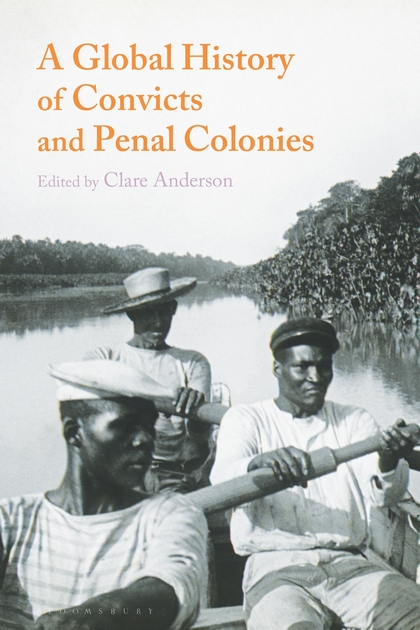
 This is part of our special feature on Crime and Punishment.
This is part of our special feature on Crime and Punishment.
During 2013, Nadezhda Tolokonnikova, a member of the Russian feminist protest punk rock group Pussy Riot, went missing for twenty-seven days while serving a two-year sentence for “hooliganism motivated by religious hatred.” Tolokonnikova was transferred to an unknown destination from a prison colony in the Russian republic of Mordovia, where she was on hunger strike responding to conditions in the prison. Her husband, Petya Verzilov (who had been protesting regularly outside the colony) told reporters: “We think they moved her to a big city to hide her; It seems they got sick of these protests.” During the twenty-first century, transit between prisons across Russia’s vast land mass is an arduous affair involving decades-old prison trains hitched onto regular passenger services. Unlike normal trains, prison wagons make regular stops to pick up and drop off prisoners en route, meaning that prisoners’ journeys can take weeks, and Russian law only requires that authorities inform relatives of where a prisoner is being held ten days after the prisoner’s arrival in a new place of confinement. Once Tolokonnikova’s whereabouts had been unknown for over three weeks, the prison service assured Russia’s human rights ombudsman that the artist was in the Siberian city of Krasnoyarsk regional jail; during that time, “The administration of IK-50 [prison] in the middle of the taiga [virgin forest] told [Verzilov] that ‘We don’t have Tolokonnikova here and don’t know when she’ll arrive.'” Eventually, a tip-off from a prison staff member informed Verzilov that Tolokonnikova was being treated for medical issues in Regional Tuberculosis Hospital No. 1 in Krasnoyarsk, 3,700 km from Mordovia.
Clare Anderson’s edited volume, A Global History of Convicts and Penal Colonies, proposes to cover this territory. The edited volume’s organizing principle is the history of transnational empires’ convicts and penal colonies, with an encompassing chronology of modernity. The volume addresses: “Modern Europe,” as well as France’s empire, Great Britain’s empire in South Asia, Japan, Portugal’s empire, Post-colonial Latin America, Spain’s empire, Sweden’s empire, the Dutch East India company in Asia, the Russian Empire and the U.S.S.R., and transportation from Britain and Ireland. The narrative begins around the year 1100, and continues until the present. In an epilogue, “In Carceral Motion: Disposals of Life and Labor,” Ann Laura Stoler acknowledges: “I take my task here not to be one of ferreting our generalizations but one of drawing conceptual sustenance from some of the marked similarities that these contributions bring into relief as well as drawing out less articulated threads of patterns that such a collective project suggests.”
Stoler introduces the term “precariously able” to describe humans, to build towards the observation that modernity is: “a groomed landscape of inequality and the production of a precarious, unprotected poor on whose ready displacement, and dislocation, large infrastructural projects, would depend” (373). She references Eric Alliez and Maurizio Lazarato for an equivalence of race and class, asserting that “civil wars on the poor” are structures of violence and domination that produce class and racial enemies. This rich and nuanced discussion of the volume’s individual contributions concludes, “As a history of the present, the histories we are offered dating back to the fifteenth century alter the optics within which global networks are lodged;” in her closing, she reminds us: “the contemporary carceral regime is big business: for private investors, contractors, state coffers, and public works” (370).
This volume emerged from a 2015 University of Leicester conference, “The Carceral Archipelago: Transnational Circulations in Global Perspective, 1415-1960,” which was supported by the European Research Council, under the European Union’s Seventh Framework Programme. As an edited volume, this is extraordinary in the degree to which the individual chapters reference one another, creating a unique and rich conversation. There’s something both incidental and ephemeral in political and legal frameworks that support academic publications; in the conversations that any single conference gives rise to; and in the chapters which find their way into a collection of chapters. This review attempts to acknowledge the winding paths to which such contingencies give rise. Anderson’s work is a welcome addition to a field which merits more investment; on the shelves of Rice University’s Fondren Library, it stands alongside Ruthe Pike’s Penal Servitude in Early Modern Spain (1983), Emma Christopher’s A Merciless Place: The Fate of Britain’s Convicts After the American Revolution (2011), Gwenda Morgan and Peter Rushton’s Eighteenth-Century Criminal Transportation: The Formation of the Criminal Atlantic (2004). Anderson’s edited volume introduces contemporary theoretical concerns, as well as the concerns of contemporary activists to historical topics.
Recalling the legal and institutional circumstances in which Nadezhda Tolokonnikova found herself, Sarah Badcock and Judith Pallot’s chapter, “Russia and the Soviet Union from the Nineteenth to the Twenty-First Century” notes the distinctive elements of Russia’s penal history (from the Imperial period, through the R.S.F.S.R., to the Federation), “Russia did not operate in a penal vacuum.” Balancing their analysis between local and the global, Badcock and Pallot note: “Siberia was an integral part of the polity but was also treated as a colonial space and a zone of exclusion, which could serve a triple function of punishing miscreants, colonizing empty space, and protecting the homeland by removing pernicious influences.” With regard to the Imperial period, the two scholars note that Michel Foucault’s concept of modern penal systems—that the authorities would both control and know the prisoners’ mind and body—is confounded “by the realities of Russia’s penal space… there was no concrete information on death rates, on escapes, or on how many exiles had ended their sentences and left the region.” For the Soviet period, “train travel was the main mode of transportation,” including for deportation of ethnic minorities and nationalities from newly-acquired territories during World War II.
Jean-Lucien Sanchez’s assessment of convicts and penal colonies in France’s empire stretches from 1542 to 1976, with particular emphasis on the convicts (bagnards or forçats) sent to penal colonies (colonies pénitentiaires or bagnes coloniaux) in French Guiana and New Caledonia, which—as he points out—were “inspired by the penal colonization model set up by Great Britain in Australia.” While his etymology of these terms is helpful, observations such as, “from 1841 until the early 1880s, Algerian prisoners of war and insurgents were interned in ‘castles or fortresses in the interior’ in [the] metropolis…, mainly in Sainte-Marguerite island… and in the ‘depot of Arab internees…” (129) distracts from the simultaneous dispossession of Algerians’ acreage through the cantonment policy. Furthermore, Sanchez’s observations on the native system (régime de l’indigénat, 141) would benefit from Stoler’s insight that modernity is: “a groomed landscape of inequality and the production of a precarious, unprotected poor.” It bears noting that the index for the entire volume directs the reader to ten references for “colonization,” totaling twenty pages (out of 389). This Global History is a specific view: “plantations” has four references, “Algeria” two, “quarantine” one, “Egypt” none.
It’s unusual to review an edited volume, and the task brings its own challenges. As it happens, I’m responding to this text from North Africa, after having established a several-years’ conversation with Anthony Gorman (who is not included in this volume). Like many edited volumes, individual chapters are somewhat uneven with regard to the sources they consult, and in a general analytic response these sources. Furthermore, I question the editor’s choice to include the word “global” in the title for a volume paying scant attention to historians’ contributions regarding penal regimes under colonialism, that “equivalence of race and class” which gave rise to modernity worldwide.
Reviewed by Elizabeth Bishop, Texas State University
A Global History of Convicts and Penal Colonies
By Clare Anderson
Publisher: Bloomsbury Academic
Hardcover / 408 pages / 2018
ISBN: 9781350000674
To read more book reviews click here
Published on November 8, 2018.




